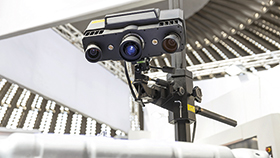

In the complex realm of manufacturing, Defect Visual Inspection (DVI) has emerged as a critical process, evolving significantly over time. The landscape of visual inspection has transformed from manual checks performed by artisans to AI-enhanced automated systems. As manufacturing processes continue to become more sophisticated, the importance and effectiveness of advanced DVI solutions escalate, presenting opportunities for improved quality control.
DVI leverages cutting-edge technologies such as machine learning, computer vision, and artificial intelligence. These technologies can analyse various visual data in real time, surpassing human capabilities in speed, accuracy, and consistency. DVI solutions present manufacturers with an opportunity to identify defects with high precision, preventing costly recalls of products, and potential damage to reputation.
The last decade has brought forth the next wave of DVI evolution: AI and deep learning. These technologies have revolutionised visual inspection. Modern systems, such as the DVI solution developed by Avnet Silica in partnership with Deep Vision Consulting, can learn to identify defects in products from imagery examples, improving their accuracy over time. They can analyse complex patterns and detect defects that earlier systems would miss. These advancements have allowed production lines to move towards inspection systems that can adapt and improve continually.
The tool recently unveiled by Avnet Silica is a state-of-the-art solution that perfectly demonstrates the developments in defect visual inspection technology. This ground-breaking technology offers real-time and precise fault detection by fusing cutting-edge machine-learning algorithms with first-rate image processing methods.
The versatility of the DVI tool, which makes it useful in a variety of industries, is one of its main advantages, as this tool can efficiently find flaws and maintain product quality in a variety of manufacturing contexts, whether it be for electronics, automobiles, medicines, or packaging. But perhaps even more impressive is the fact that the solution doesn’t require the end user to have experience in using or setting up machine-learning systems. Instead, the user simply takes between 10-30 images of a product without any imperfections, and the solution takes care of the rest.
This 100% AI-based inspection system uses a system-on-module (SoM) to handle the processing in conjunction with the proprietary ‘Defect Visual Inspection’ software library. Photos of a product with no imperfections are taken via the software library. The system is then allowed to go through a short phase of learning before being able to spot product defects in a production line with very high accuracy.
This solution is perfect for companies looking to deploy a DVI solution quickly, without the need for knowledge of deploying machine learning solutions.
| Tel: | +27 11 319 8600 |
| Email: | [email protected] |
| www: | www.avnet.com/wps/portal/silica |
| Articles: | More information and articles about Avnet Silica |

© Technews Publishing (Pty) Ltd | All Rights Reserved